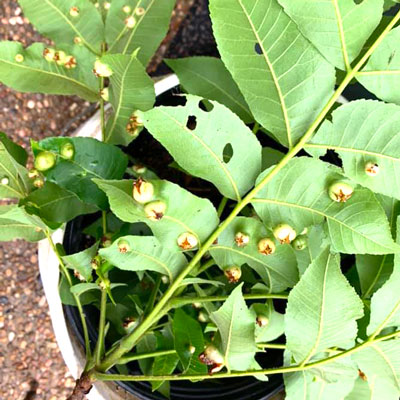Question of the Week: May 21, 2020

“What is happening to my pecan’s leaves? What can I do to stop it?”
This is the work of pecan phylloxera. They’re gall-causing insects, and the good news, right off the top, is that they’ve never killed a pecan tree. However, since I’m not trained as an entomologist, I thought I’d do a little research on the Texas A&M websites. Take a look at the scientific name for this insect: Phylloxera devastatrix. It sounds pretty ominous!
The insect that causes this is a soft-bodies little pest that resembles an aphid. It emerges in early spring as leaf buds are opening. The phylloxera insects inject a toxin into the plant tissues causing galls to form around the insects.
Sevin sprays made before the galls form may offer some degree of control. Dormant (horticultural) oil sprayed in late winter is also of some benefit.
The good news is that damage is usually not major. Leaves produced after the first round of galls and the associated leaf drop usually will not be impacted.
Here is an excellent reference sheet from Texas A&M.
